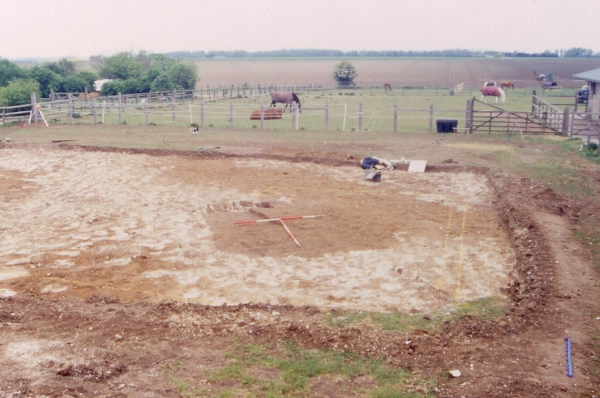
Today’s image for Day 308 of the VM_365 project shows a common type of archaeological feature of Anglo Saxon date, known as a Sunken Featured Building, which was uncovered during an evaluation carried out in advance of the construction of a house at Woodchurch, Birchington in 2002. The picture is taken looking across the valley from Woodchurch toward the tree lined boundary of Quex Park. This is post is another example of a small keyhole investigation which has revealed important information without extensive excavation.
The depth of overburden above the chalk was less than 10 centimetres deep and so the entire footprint of the building was stripped to expose the chalk and reveal archaeological features. The Sunken Featured Building (usually shortened by archaeologists to the initials SFB) can just be made out in the centre foreground of the picture as a rectangular patch of earth slightly darker in colour than the periglacial brickearth stripe to the north and on which the photographic scales are placed.
Because it was possible to move the foundations of the house to avoid the SFB, only a small segment was excavated through it. Artefacts recovered from the small area excavated included an Iron knife, a sherd of pottery and a small fragment from a double sided bone comb, which date the SFB from the mid to late 6th to 7th century.
Evidence of Anglo Saxon settlement is relativley rare in Thanet, compared to the known locations of cemeteries of this date. Other Sunken Featured Buildings have featured in previous VM_365 project posts, one from Margate on Day 83 and one from Sarre on Day 229.
The SFB at Woodchurch was abe to be preserved in situ and now survives below the lounge of the property.